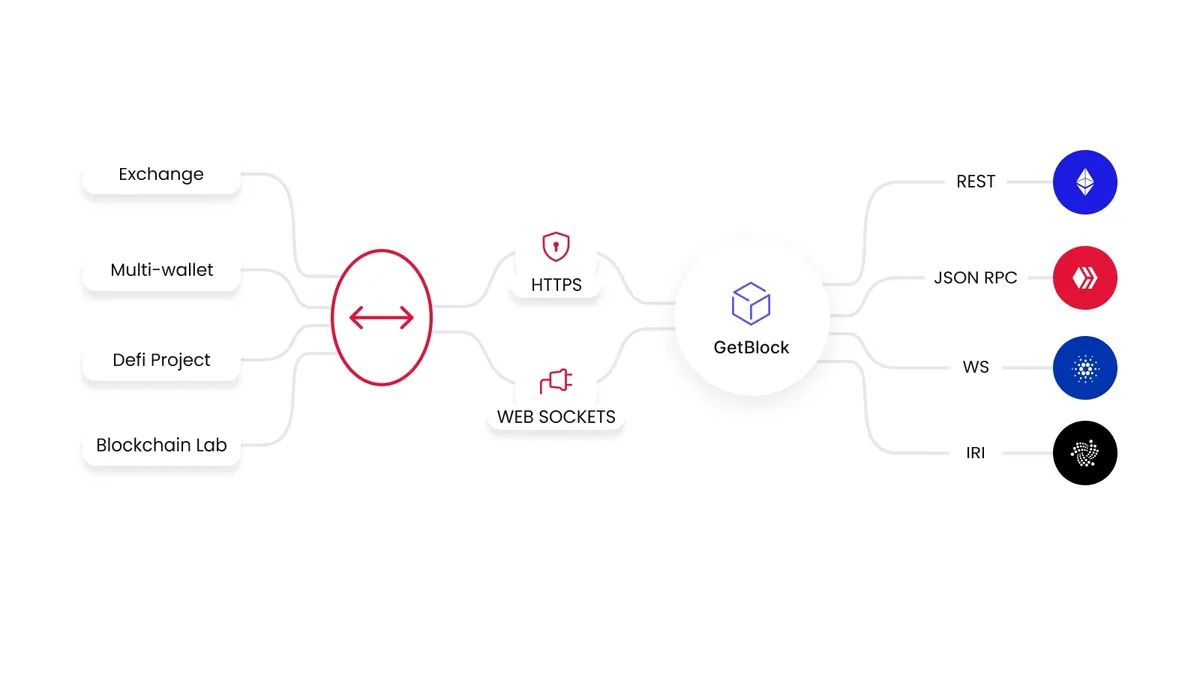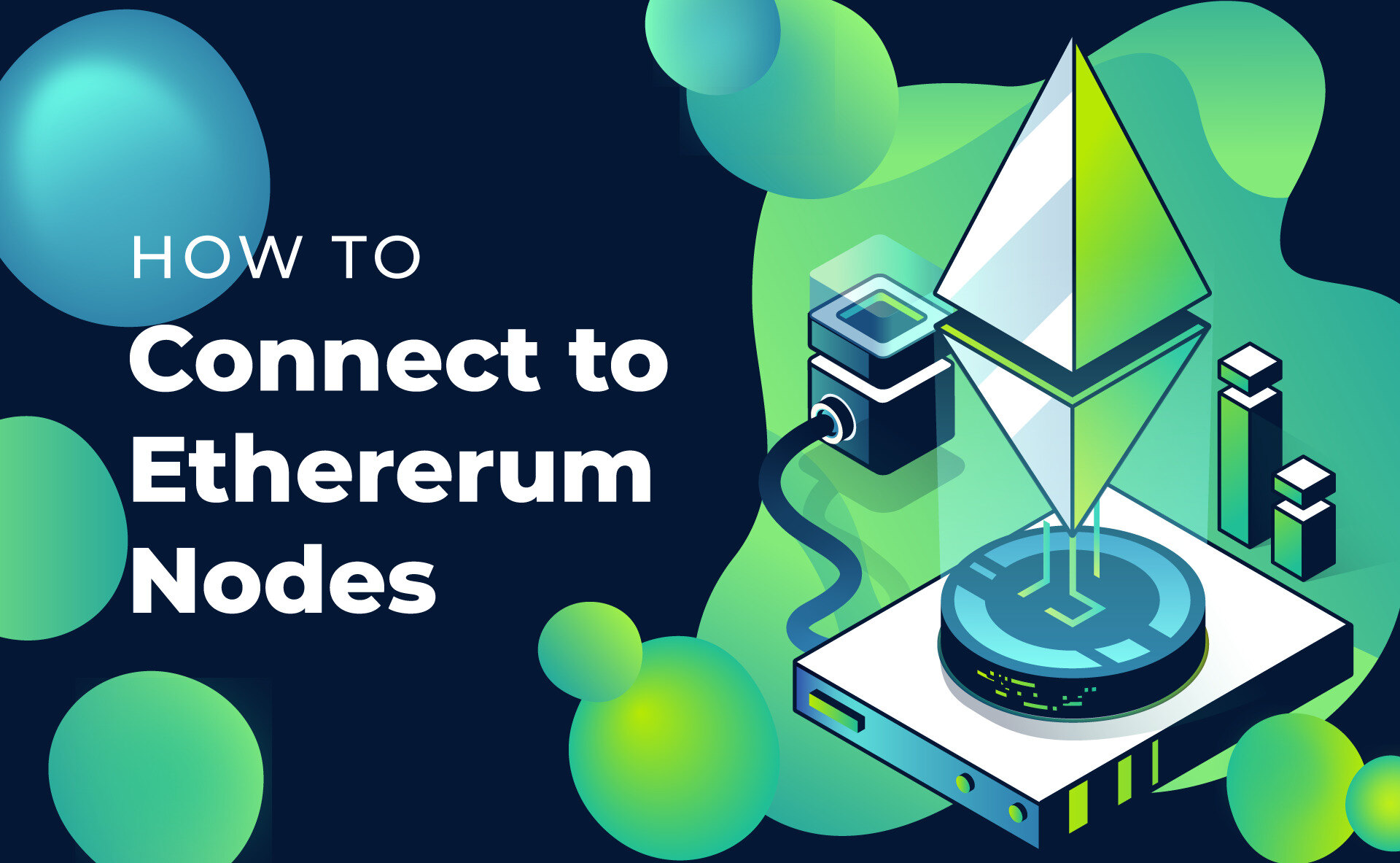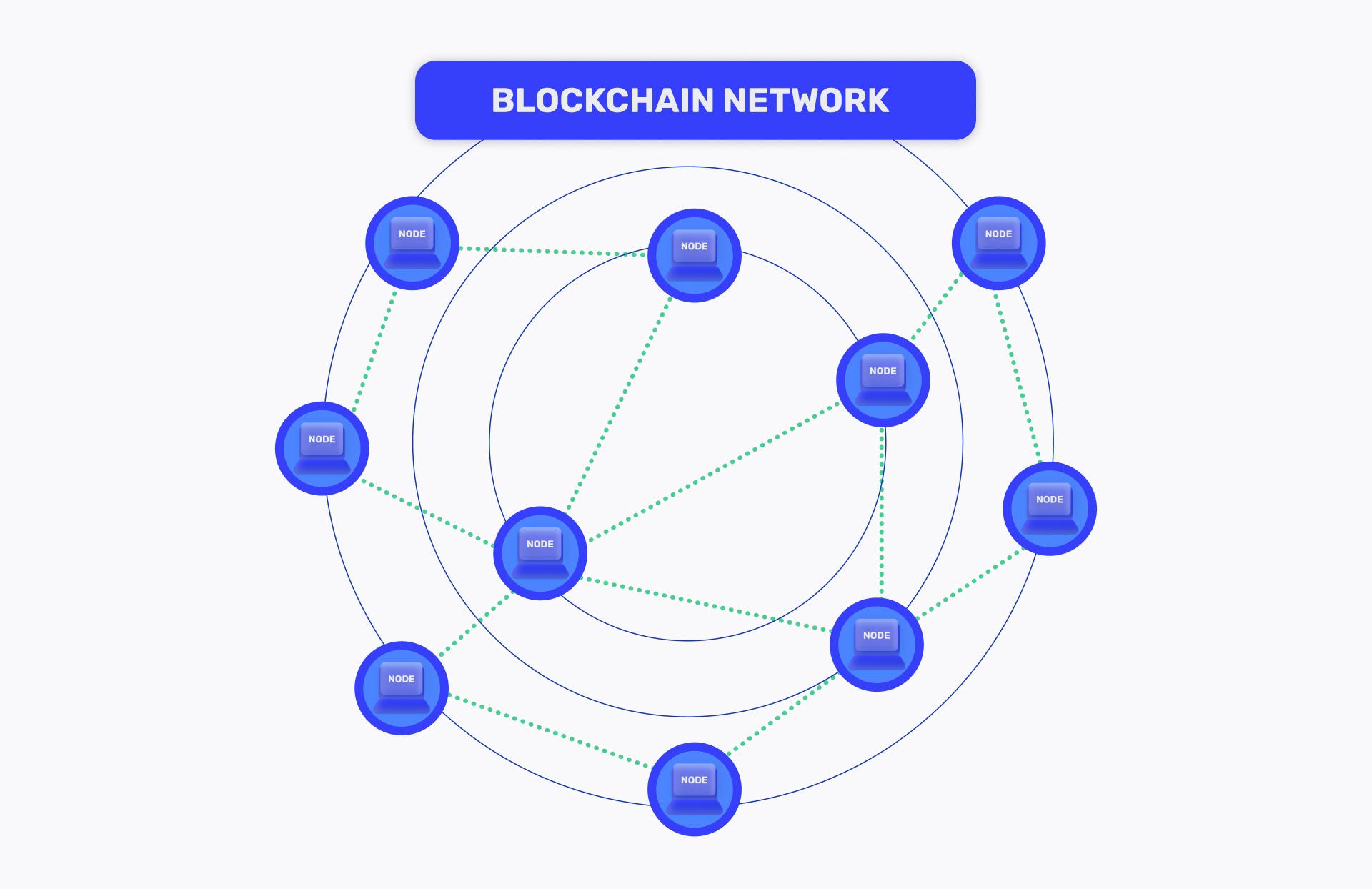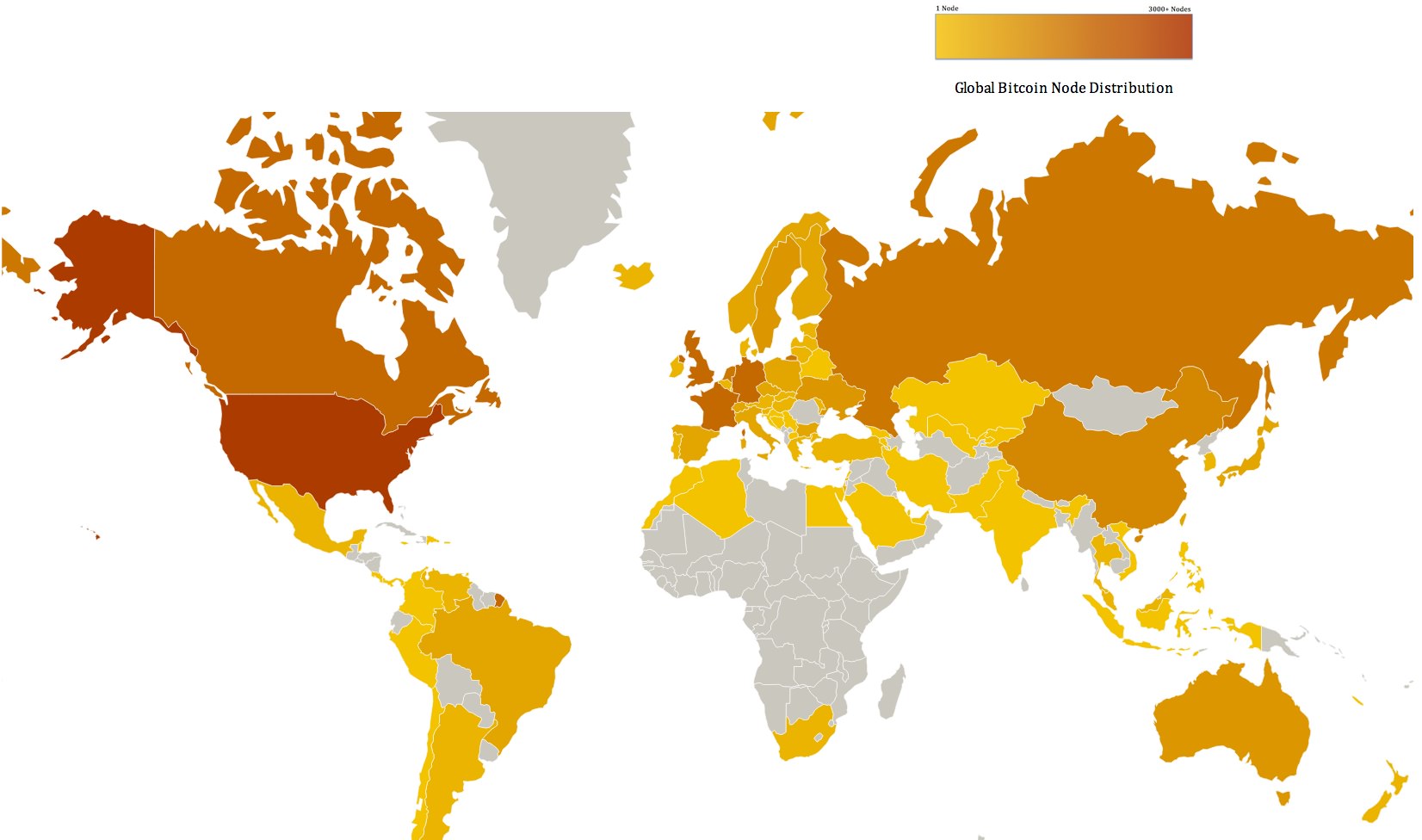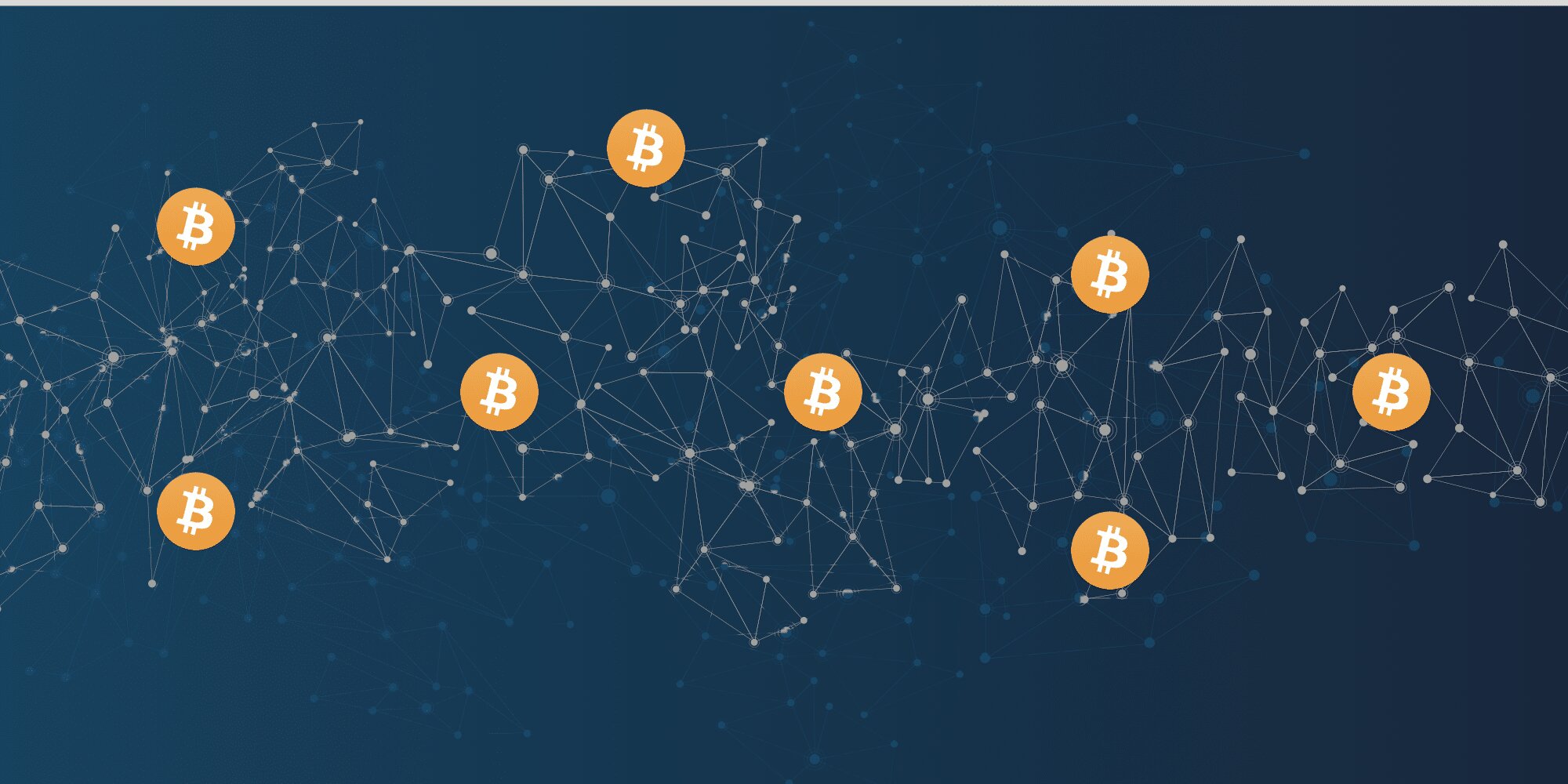Introduction
Welcome to the world of blockchain technology, where decentralization and trustless networks reign supreme. At the core of blockchain networks, we find nodes, the backbone that powers and secures the entire system. Understanding what a node is and its role in the blockchain ecosystem is crucial for anyone interested in delving deeper into this revolutionary technology.
So, what exactly is a node on blockchain? In simple terms, a node can be thought of as a participant or a computer connected to a blockchain network. These nodes maintain a complete copy of the blockchain, validate and store transactions, and actively participate in the consensus mechanism that governs the network.
Nodes play a vital role in the functioning of a blockchain. They communicate with other nodes to propagate transactions and blocks across the network, ensuring that all participants have an up-to-date copy of the shared ledger. Without nodes, a blockchain network would cease to exist.
Blockchain networks can have different types of nodes, each serving a specific purpose. Full nodes, light nodes, mining nodes, and masternodes are common examples. Each of these nodes has its own unique characteristics and responsibilities within the network.
In this article, we will explore the different types of nodes in blockchain networks, discuss their roles and responsibilities, and delve into why they are essential for the overall functioning and security of the blockchain ecosystem.
Definition of a Node on Blockchain
Before we dive into the different types of nodes in blockchain networks, let’s establish a solid understanding of what a node actually is in the context of blockchain technology.
A node can be defined as an individual computer or device that participates in a blockchain network. Each node maintains a complete and up-to-date copy of the blockchain’s ledger, which contains all the transactions and data that have occurred on the network.
Nodes serve as the building blocks of a blockchain network, working together to validate, store, and propagate transactions and blocks across the network. They verify the accuracy and authenticity of incoming transactions, ensuring that only valid transactions are added to the blockchain.
With their copies of the blockchain, nodes serve as public witnesses to the entire transaction history of the network, providing transparency and immutability. This decentralized nature of nodes in a blockchain ensures that there is no single point of failure or control.
Nodes communicate with one another using a peer-to-peer (P2P) network protocol, sharing information about new transactions, blocks, and updates to the blockchain. This enables the network to reach a consensus on the state of the blockchain, ensuring that all nodes have the same copy of the ledger.
It’s important to note that not all nodes in a blockchain network have the same level of authority or responsibility. The types of nodes can vary depending on the specific blockchain protocol and its design.
In the next sections, we will explore the different types of nodes that you may encounter in a blockchain network, each with its own unique characteristics and functions.
Types of Nodes
Blockchain networks are comprised of various types of nodes, each serving a specific purpose and playing a crucial role in the overall functioning and consensus mechanism of the network. Let’s explore some of the most common types of nodes found in blockchain ecosystems:
- Full Nodes: Full nodes, also known as validating nodes, are the backbone of a blockchain network. These nodes maintain a complete copy of the entire blockchain, storing all the transaction history and validating each new transaction that is added to the network. Full nodes independently verify the rules and protocols of the blockchain to ensure the integrity of the system.
- Light Nodes: Light nodes, also referred to as simplified payment verification (SPV) nodes, do not store the entire blockchain. Instead, they store a subset of the blockchain data, typically the block headers. Light nodes rely on full nodes to validate transactions and provide them with the necessary information to verify the authenticity of their transactions. Light nodes are commonly used in mobile and resource-constrained devices.
- Mining Nodes: Mining nodes are responsible for the process of mining new blocks in proof-of-work (PoW) blockchain networks like Bitcoin. These nodes compete with each other to solve complex mathematical problems, with the first node to find a solution being rewarded with newly minted coins. Mining nodes contribute their computational power to secure the network and maintain the consensus mechanism.
- Masternodes: Masternodes are a type of node found in specific blockchain networks, primarily in cryptocurrencies with advanced features like proof-of-stake (PoS) or masternode-enabled protocols. Masternodes perform additional functions such as validating transactions, participating in governance decisions, and providing enhanced security and privacy features to the network. Masternode operators often need to hold a specific number of tokens as collateral.
These are just a few examples of the various types of nodes that can exist in a blockchain network. Depending on the specific blockchain protocol, there may be additional types of nodes designed to serve niche purposes within the ecosystem.
Understanding the different types of nodes is essential in comprehending the decentralized nature of blockchain networks and how they achieve consensus among participants. Each type of node contributes to the overall security, transparency, and efficiency of the blockchain ecosystem.
Full Nodes
Full nodes, also known as validating nodes, are the backbone of a blockchain network. These nodes play a critical role in maintaining the integrity and decentralization of the network. Let’s delve deeper into the characteristics and responsibilities of full nodes:
A full node is a participant in a blockchain network that maintains a complete and up-to-date copy of the entire blockchain. This means that full nodes store every transaction that has ever occurred on the network, from the genesis block to the most recent transactions. By storing the complete transaction history, full nodes ensure the transparency and immutability of the blockchain.
One of the primary responsibilities of full nodes is to validate transactions. Every transaction that occurs on the blockchain must pass through a series of verification steps before it is added to the blockchain. Full nodes independently verify each transaction to ensure that it adheres to the consensus rules and protocols set by the blockchain network.
Full nodes are also responsible for propagating transactions and blocks across the network. When a new transaction is initiated, full nodes receive and verify the transaction before forwarding it to other nodes. Similarly, when a new block is mined, full nodes validate the block and distribute it to the entire network, ensuring that all participants have the most up-to-date copy of the blockchain.
Another crucial role of full nodes is participating in the consensus mechanism of the network. In blockchain networks that utilize proof-of-work (PoW) or proof-of-stake (PoS) consensus, full nodes contribute to the validation and verification process. They actively engage in consensus-building activities, reaching agreement on which blocks and transactions are valid and should be added to the blockchain.
As full nodes store the complete blockchain, they offer several advantages. First, they provide a high level of security as they don’t need to rely on other nodes for data verification. By independently validating transactions, full nodes mitigate the risk of accepting fraudulent or invalid transactions. Additionally, full nodes enhance the resiliency and decentralization of the blockchain network by serving as public witnesses, removing the reliance on centralized authorities.
However, running a full node can be resource-intensive. The size of the blockchain grows over time, requiring a significant amount of storage space. Furthermore, full nodes require computational power to validate transactions and participate in consensus. Despite these challenges, many individuals, organizations, and companies choose to run full nodes to contribute to the security and stability of the blockchain network.
In summary, full nodes are critical participants in a blockchain network. They maintain a complete copy of the blockchain, validate transactions, propagate data across the network, and contribute to the consensus mechanism. By ensuring transparency, security, and decentralization, full nodes play a vital role in the success and integrity of a blockchain ecosystem.
Light Nodes
Light nodes, also known as simplified payment verification (SPV) nodes, offer a lightweight alternative to full nodes in blockchain networks. These nodes provide a reduced storage and computational footprint while still enabling users to participate in the network. Let’s explore the characteristics and benefits of light nodes:
A light node is a participant in a blockchain network that does not store the entire blockchain. Instead, it selectively stores a subset of the blockchain data, usually consisting of block headers. By storing only the essential information, light nodes can minimize their storage requirements and computational load.
One of the primary advantages of light nodes is their reduced storage requirements. Storing the full blockchain can be impractical, especially for resource-constrained devices or mobile wallets. Light nodes overcome this limitation by storing a fraction of the data, allowing them to operate on devices with limited capacity.
Light nodes rely on full nodes to validate transactions and provide them with the necessary information. When a light node initiates a transaction, it does not verify the entire blockchain but rather relies on the verification performed by full nodes. This enables light nodes to verify the authenticity and validity of their transactions without having to store and process the entire blockchain.
In addition to reduced storage requirements, light nodes also offer faster synchronization with the blockchain network. Since they only need to download and verify block headers, the time required to catch up with the blockchain’s history is significantly reduced compared to that of a full node. This feature is particularly beneficial for mobile wallets and devices with limited internet connectivity.
However, light nodes do have some trade-offs. While they offer improved efficiency and reduced resource requirements, light nodes sacrifice a degree of security and decentralization. Since they rely on full nodes for transaction verification, there is a level of trust placed on those full nodes to accurately validate transactions. This reliance on other nodes introduces a small level of centralization, as the light node depends on a select few full nodes for verification.
Despite these limitations, light nodes are popular among certain applications and use cases. Mobile wallets, IoT devices, and low-power devices often utilize light nodes due to their efficiency and reduced resource footprint. Light nodes allow these devices to participate in the blockchain network and perform essential transactions without significant storage or computational requirements.
In summary, light nodes provide a lightweight alternative to full nodes in blockchain networks. They offer reduced storage requirements, faster synchronization, and improved efficiency, making them ideal for resource-constrained devices. While they may sacrifice some security and decentralization compared to full nodes, light nodes play a crucial role in enabling broader accessibility and participation in blockchain ecosystems.
Mining Nodes
Mining nodes are an integral part of blockchain networks that utilize a proof-of-work (PoW) consensus mechanism, such as Bitcoin. These nodes are responsible for validating transactions, solving complex mathematical problems, and adding new blocks to the blockchain. Let’s explore the characteristics and role of mining nodes in blockchain ecosystems:
A mining node is a participant in the network that competes with other nodes to solve mathematical puzzles, known as mining algorithms. These algorithms require significant computational power and resources to find a solution. The first node to successfully solve the puzzle is rewarded with newly minted coins and the right to add a new block to the blockchain.
One of the primary responsibilities of mining nodes is transaction validation. Every transaction that occurs on the blockchain must be verified to ensure its authenticity and adhere to the consensus rules of the network. Mining nodes play a crucial role in validating transactions and ensuring that they meet the requirements for inclusion in a new block.
Mining nodes also contribute their computational power to secure the network and maintain the integrity of the blockchain. By solving the mathematical puzzles, mining nodes provide the proof-of-work that confirms the validity of a new block. This process ensures that malicious actors cannot easily manipulate the blockchain and that the network is resistant to attacks.
In addition to transaction validation, mining nodes are responsible for adding new blocks to the blockchain. Once a mining node successfully solves the mining algorithm, it creates a new block containing verified transactions and adds it to the blockchain. This process requires coordination with other nodes to reach a consensus on the order and validity of transactions, ensuring the consistency of the blockchain across the network.
Running a mining node can be resource-intensive due to the computational power required to compete in the mining process. Miners invest in powerful hardware, such as specialized mining rigs or application-specific integrated circuits (ASICs), to increase their chances of solving the mining algorithm before other nodes. Additionally, energy consumption is a significant factor for mining nodes, as the computational processes can be energy-intensive.
Mining nodes play a critical role in the security and decentralization of blockchain networks. By contributing their computational power, they ensure the immutability and consensus of the blockchain. The competitive nature of mining incentivizes miners to act honestly and follow the network’s rules, as any attempt to manipulate the blockchain would be rejected by the network. This consensus mechanism is essential in maintaining the trust and integrity of the blockchain ecosystem.
However, it’s worth noting that the mining process also introduces certain challenges, such as the centralization of mining power and the increasing difficulty of mining algorithms. In some blockchain networks, mining has become concentrated among a few large mining pools, raising concerns about decentralization. Additionally, the increasing computational power required for mining means that individuals or small-scale miners may find it difficult to compete with larger mining operations.
In summary, mining nodes are vital participants in blockchain networks that employ a proof-of-work consensus mechanism. They validate transactions, solve complex algorithms, and add new blocks to the blockchain. While mining requires substantial computational resources and energy consumption, mining nodes contribute to the security, decentralization, and consensus of the blockchain ecosystem.
Masternodes
Masternodes are a specialized type of node found in certain blockchain networks, offering enhanced functionalities and playing a crucial role in the governance, security, and advanced features of the network. Let’s explore the characteristics and responsibilities of masternodes in the blockchain ecosystem:
A masternode is a participant in a blockchain network that fulfills specific requirements and performs additional functions beyond transaction validation. Masternodes are typically associated with cryptocurrencies that utilize advanced consensus mechanisms, such as proof-of-stake (PoS), or implement specific features like decentralized governance or enhanced privacy.
One of the primary responsibilities of masternodes is transaction validation. Similar to full nodes, masternodes play a crucial role in verifying transactions and ensuring their adherence to the consensus rules and protocols of the network. By independently validating transactions, masternodes contribute to the overall security and integrity of the blockchain.
However, masternodes also go beyond transaction validation and provide additional functionalities that distinguish them from other types of nodes. For example, in blockchain networks that implement decentralized governance, masternodes actively participate in the decision-making process and voting mechanisms. These nodes have a stake in the network and contribute to shaping its future direction.
Masternodes also often provide enhanced security features and privacy services to the network. They may participate in functions like coin mixing or transaction obfuscation to improve the anonymity of transactions. These additional features differentiate masternodes from other nodes in the network and make them desirable for certain use cases that prioritize privacy and security.
Running a masternode typically requires meeting specific criteria set by the network. This may include holding a minimum amount of tokens as collateral, maintaining a stable online presence, and fulfilling certain technical requirements. By enforcing these criteria, masternodes add an additional layer of security and stability to the network.
Another distinguishing feature of masternodes is their potential for earning rewards. In some blockchain networks, masternode operators can receive rewards for providing their services to the network. These rewards can come in the form of newly minted tokens or a share of the transaction fees generated on the network. The incentive to operate a masternode further encourages participation and contributes to the network’s overall health and stability.
While masternodes offer advanced functionalities and additional rewards, they are not without challenges. The operation and maintenance of a masternode can require technical expertise, financial investment, and dedicated resources. Additionally, due to the potential rewards involved, masternode networks may face centralization concerns, with a concentration of power among a few masternode operators.
In summary, masternodes are specialized nodes found in certain blockchain networks that offer enhanced features, governance capabilities, and security functionalities. They validate transactions, participate in network governance, and provide additional services like privacy and security enhancements. Despite certain challenges and concerns, masternodes play a vital role in shaping the direction and success of specific blockchain ecosystems.
Responsibilities of a Node
Nodes in a blockchain network have specific responsibilities that contribute to the overall functionality and security of the ecosystem. Whether it’s a full node, light node, mining node, or masternode, each type of node has its own set of responsibilities. Let’s explore the general responsibilities that nodes in a blockchain network typically have:
Transaction Validation: One of the primary responsibilities of a node is to validate transactions. Nodes verify the authenticity and integrity of incoming transactions, ensuring that they adhere to the consensus rules and protocols of the network. By validating transactions, nodes play a crucial role in preventing fraudulent or invalid transactions from being added to the blockchain.
Storing Blockchain Data: All nodes in a blockchain network store a copy of the blockchain’s ledger. This requires nodes to have sufficient storage capacity to store and maintain the entire transaction history and data of the network. By storing the blockchain data, nodes contribute to the transparency and immutability of the network, allowing participants to access and verify the transaction history.
Propagating Transactions and Blocks: Nodes actively participate in propagating transactions and blocks across the network. When a new transaction is initiated, nodes receive and verify the transaction before forwarding it to other nodes. Similarly, when a new block is added to the blockchain, nodes distribute and propagate it to ensure that all nodes in the network have an up-to-date copy of the blockchain.
Participating in Consensus Mechanism: Nodes play a crucial role in the consensus mechanism of a blockchain network. Whether it’s by mining new blocks, validating transactions, or participating in governance decisions, nodes actively contribute to reaching a consensus on the state of the blockchain. This consensus ensures that all participants have a shared understanding of the network’s transaction history and prevents the double-spending problem.
Network Connectivity: Nodes need to maintain a stable and reliable internet connection to communicate with other nodes in the network. This connectivity enables the exchange of transactions, blocks, and other information, ensuring the synchronization and consensus of the blockchain. Nodes should strive to maintain uninterrupted connectivity to fulfil their responsibilities effectively.
Ensuring Network Security: Nodes play a vital role in the security of a blockchain network. By validating transactions, nodes help prevent fraudulent or malicious activities from being added to the blockchain. Nodes also contribute their computational power and resources to maintain the integrity, resistance to attacks, and immutability of the blockchain. By collectively securing the network, nodes uphold the trust and reliability of the blockchain ecosystem.
These are some of the general responsibilities that nodes typically have in a blockchain network. However, it’s important to note that the specific responsibilities and functions of nodes may vary depending on the type of node and the particular blockchain protocol in use.
By fulfilling their responsibilities, nodes enable the successful operation and functioning of the blockchain network, enforcing transparency, security, and consensus among participants.
Nodes and Consensus Mechanism
Nodes play a crucial role in the consensus mechanism of a blockchain network. Consensus is the process by which participants in a network agree on the validity and order of transactions to ensure the integrity and immutability of the blockchain. Let’s explore how nodes contribute to the consensus mechanism:
In a blockchain network, nodes work together to achieve consensus by validating transactions, proposing new blocks, and agreeing on the state of the blockchain. Each node independently verifies incoming transactions, ensuring that they adhere to the consensus rules and protocols defined by the network.
When a transaction is deemed valid by a node, it is propagated to other nodes in the network. These nodes also validate the transaction, reaching a consensus on its validity. This consensus process ensures that all nodes have a shared understanding of the transaction history and prevents fraudulent or double-spending attempts.
In addition to transaction validation, nodes participate in proposing new blocks that will be added to the blockchain. Mining nodes, for example, compete to solve complex mathematical puzzles in a proof-of-work (PoW) consensus mechanism. The node that successfully solves the puzzle can propose a new block and add it to the blockchain. Other nodes validate the proposed block, reaching a consensus on its validity, and incorporating it into their copy of the blockchain.
Nodes also communicate and exchange information about the current state of the blockchain. They update one another on the latest transactions, blocks, and updates, ensuring that all nodes have an up-to-date copy of the blockchain. This communication facilitates the consensus-building process and ensures the consistency and integrity of the shared ledger.
The consensus mechanism in a blockchain network is designed to be resilient and resistant to attacks. Nodes work together to enforce the rules of the network and prevent malicious activities. The decentralized nature of nodes ensures that there is no single point of failure or control, making it difficult for unauthorized entities to manipulate the blockchain.
Furthermore, the role of nodes in the consensus mechanism helps ensure the security and immutability of the blockchain. By collectively validating transactions and agreeing on the order of blocks, nodes prevent fraudulent or malicious activities from being added to the blockchain. This consensus process enhances transparency, trust, and reliability within the blockchain network.
It’s important to note that the specific consensus mechanism employed by a blockchain network may vary. Some networks use proof-of-work (PoW), where mining nodes compete to solve mathematical puzzles, while others utilize proof-of-stake (PoS), where nodes with a stake in the network can validate transactions based on the number of tokens they hold. Different consensus mechanisms may have variations in how nodes participate and validate transactions.
In summary, nodes are essential participants in the consensus mechanism of a blockchain network. They validate transactions, propose new blocks, communicate and reach consensus on the state of the blockchain. Through their coordination and cooperation, nodes ensure the integrity, security, and reliability of the blockchain, enforcing transparency and preventing fraudulent activities within the network.
Importance of Nodes in Blockchain Networks
Nodes play a fundamental and indispensable role in the functioning and success of blockchain networks. Their importance stems from various factors that contribute to the overall integrity, security, and efficiency of the blockchain ecosystem. Let’s explore the key reasons why nodes are crucial in blockchain networks:
Decentralization: Nodes are critical to achieving decentralization in blockchain networks. By participating in the validation and propagation of transactions, nodes help distribute the control and decision-making power among multiple participants. This decentralized nature ensures that there is no single point of failure or control, making the network more resilient, transparent, and resistant to attacks.
Consensus Mechanism: Nodes form the backbone of the consensus mechanism in a blockchain network. Through their participation in transaction validation, proposal of new blocks, and agreement on the state of the blockchain, nodes ensure consensus is reached among participants. Consensus guarantees the accuracy and agreement on the transaction history and prevents fraudulent or malicious activities.
Verification and Security: Nodes play a crucial role in verifying the authenticity and integrity of transactions. By independently validating transactions, nodes ensure that only valid transactions are added to the blockchain. Through their collective verification and validation processes, nodes enhance the security and immutability of the blockchain, mitigating the risk of fraud, double-spending, or tampering.
Redundancy and Resilience: Nodes provide redundancy in storing and maintaining a copy of the blockchain’s ledger. With multiple nodes holding a complete copy of the blockchain, the network becomes more resilient to failures or attacks. If one node becomes unavailable or compromised, others can take its place, ensuring the continuity and availability of the blockchain data.
Transparency and Auditing: Nodes store the entire transaction history of the blockchain, making it transparent and auditable. This transparency allows participants to verify the authenticity and integrity of transactions and provides a reliable source of information that can be audited. Nodes enable transparent, trustless interactions in the network, reducing the need for intermediaries or centralized authorities.
Governance and Consensus Rules: In blockchain networks that implement decentralized governance mechanisms, nodes are crucial for voting and decision-making processes. Masternodes, for example, can actively participate in governance decisions, influencing the direction and rules of the network. By allowing different nodes to participate in the decision-making process, blockchain networks achieve a more inclusive and democratic governance structure.
Accessibility and Participation: Nodes allow widespread accessibility and participation in blockchain networks. Anyone with a computer and an internet connection can run a node and contribute to the network’s operations. This inclusivity empowers individuals, organizations, and communities to actively engage with the blockchain ecosystem, promoting decentralization and innovation.
Overall, the importance of nodes in blockchain networks cannot be overstated. They form the building blocks of the network, ensuring decentralization, consensus, security, transparency, and accessibility. Nodes provide the necessary foundation for blockchain technology to deliver its promises of trustless transactions, immutability, and decentralized control.
Conclusion
Nodes are the lifeblood of blockchain networks, providing the infrastructure and functionality that powers these decentralized systems. Whether it’s full nodes, light nodes, mining nodes, or masternodes, each type of node plays a crucial role in maintaining the integrity, security, and efficiency of the blockchain ecosystem.
Nodes validate transactions, propagate data across the network, participate in consensus mechanisms, and ensure the transparency and immutability of the blockchain. Full nodes serve as public witnesses and validate all transactions, while light nodes offer a lightweight alternative for resource-constrained devices. Mining nodes secure the network and add new blocks, and masternodes provide advanced features and contribute to decentralized governance.
The responsibilities nodes carry are vital to the decentralized nature of blockchain networks. They enable a consensus mechanism where participants agree on the validity and order of transactions, preventing fraudulent activities and ensuring the reliability and trust within the network.
The significance of nodes in blockchain networks is evident in the benefits they bring. Nodes contribute to the decentralization of power, ensuring no single entity controls the network. They provide redundancy, enhancing the resilience of the network by storing and maintaining multiple copies of the blockchain. Nodes also empower individuals and communities to participate in the governance, auditing, and decision-making processes of the blockchain ecosystem.
However, nodes also face challenges, such as resource requirements, energy consumption, and the potential for centralization. These challenges need to be addressed to ensure the sustainability and inclusivity of blockchain networks.
In conclusion, nodes are the backbone of blockchain networks, facilitating transparency, security, and consensus. Their roles and responsibilities are crucial in maintaining the decentralized, immutable, and trustworthy nature of the blockchain ecosystem. As blockchain technology continues to evolve and grow, the importance of nodes will remain steadfast, driving the success and advancement of this groundbreaking technology.







